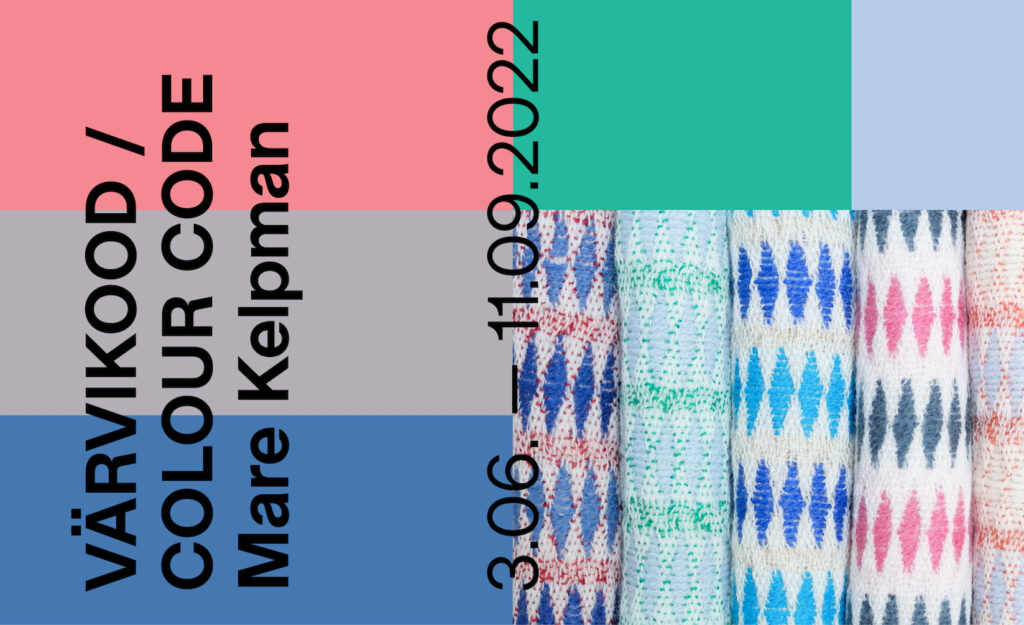The exhibition “Colour Code” sheds light on the world of woven textiles by Mare Kelpman
26.5.2022
Exhibition

Mare Kelpman’s exhibition “Colour Code” is open from 3 June at the gallery of the Estonian Museum of Applied Art and Design, providing visitors the opportunity to get acquainted with the working process of one of Estonia’s most celebrated textile designers and the broader phenomenon, which is perhaps not fully expressed in the everyday items themselves.
Mare Kelpman has built her own Kelpman Textile brand, which has transformed ordinary woollen scarves, blankets and coats into a contemporary accessory. She is a mainstay of the local design landscape and the strength of her textiles can be seen primarily in her skilful combination of patterns and colours.
It is important for Mare Kelpman to preserve the traditions of weaving through her work: “I want to help preserve a skill. I have always believed that, even in a globalising world, we need to be able to maintain our skills here in Europe, rather than becoming dependent on the skills and production of others. This issue, which I addressed more than a decade ago, is highly relevant today across Europe.”
Although linen textiles are also an important part of Kelpman’s work, the exhibition focuses on woven fabrics. She develops and weaves the fabrics herself in Finland, where she experiments with yarns, densities and patterns.
The basic creative techniques Kelpman implements and for which she is best known, mainly utilise carefully chosen colours and subtle patterns. “Colour Code” offers the audience many moments of recognition, presenting in the exhibition space, among others, the most famous patterns created by Mare Kelpman, such as Harlequin, which has become synonymous with Kelpman Textile, and the nostalgic Bullerby inspired by her childhood.
Kelpman’s work has a broad appeal and more specific regional significance. Over the last ten years, she has created work that people may experience in the form of clothing worn by four separate interviewees on the evening news during the winter season, while being an icon of modernity and local values on the advertising landscape. Considering the distribution of Kelpman’s products, it has quite rightly been referred to as the folk costume of Kalamaja.
The connection her work has with older national traditions and themes is inferred while certainly not being the primary association. Her ability to strike a balance between the ordinary and the extraordinary is rare and unique.
The exhibition focuses on the backstory of Kelpman’s work, decoding it through its renown and strengths, giving the visitor the opportunity to experience and understand her design and production processes.